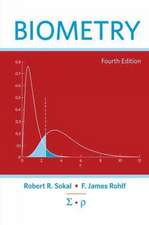Proteases in Apoptosis: Pathways, Protocols and Translational Advances
Editat de Kakoli Boseen Limba Engleză Hardback – 21 aug 2015
While slowly unravelling the complexities of apoptosis in chapter one, the next three chapters individually elaborate on different classes of proteases that play key roles in the initiation, progression and execution of programmed cell death. The last two chapters complete this discussion by describing different laboratory methodologies and therapeutic advances involving apoptotic proteases. Protocols portraying in vitro and ex vivo colorimetric and fluorescence-based enzyme kinetic studies as well as cell death assays are explained in the fifth chapter. Preclinical in vivo models and non-invasive imaging in apoptosis to understand the complexities of disease progression and their contribution toward therapeutics is recounted in the last chapter.
The book spans topics related to both fundamental and applied biology. It would therefore be equally appealing and informative to scientists working in the field of apoptosis and those who are investigating mechanisms of proteases and enzymes in general. The protocols would certainly benefit both graduate and undergraduate students working in the related fields and provide useful leads for drug design to translational biologists involved in neurodegeneration and cancer research.
| Toate formatele și edițiile | Preț | Express |
|---|---|---|
| Paperback (1) | 556.58 lei 38-44 zile | |
| Springer International Publishing – 22 oct 2016 | 556.58 lei 38-44 zile | |
| Hardback (1) | 648.89 lei 3-5 săpt. | |
| Springer International Publishing – 21 aug 2015 | 648.89 lei 3-5 săpt. |
Preț: 648.89 lei
Preț vechi: 763.40 lei
-15% Nou
Puncte Express: 973
Preț estimativ în valută:
124.16€ • 129.64$ • 102.76£
124.16€ • 129.64$ • 102.76£
Carte disponibilă
Livrare economică 15-29 martie
Preluare comenzi: 021 569.72.76
Specificații
ISBN-13: 9783319194967
ISBN-10: 3319194968
Pagini: 245
Ilustrații: XV, 245 p. 51 illus., 50 illus. in color.
Dimensiuni: 155 x 235 x 19 mm
Greutate: 0.65 kg
Ediția:1st ed. 2015
Editura: Springer International Publishing
Colecția Springer
Locul publicării:Cham, Switzerland
ISBN-10: 3319194968
Pagini: 245
Ilustrații: XV, 245 p. 51 illus., 50 illus. in color.
Dimensiuni: 155 x 235 x 19 mm
Greutate: 0.65 kg
Ediția:1st ed. 2015
Editura: Springer International Publishing
Colecția Springer
Locul publicării:Cham, Switzerland
Public țintă
ResearchCuprins
Apoptosis: Pathways, Molecules and Beyond.- Caspases - key players in apoptosis.- Calpains and Granzymes: non-caspase proteases in cell death.- Cathepsins and HtrAs - multitasking proteases in programmed cell death.- Proteases in Apoptosis: Protocols and Methods.- Preclinical Animal Model and Non-invasive Imaging in Apoptosis.
Recenzii
“This is acomprehensive overview of the mechanisms of apoptosis, with a particularemphasis on proteases. … The book is designed to inform and inspireundergraduate and graduate students to pursuing biomedical research. … it mightbe more appropriate for researchers in related fields who desire acomprehensive source of current information about apoptotic proteases … . Thisis a useful addition to the field and many will find it useful when preparinglectures or when working in related fields.” (Susan Viselli, Doody’s BookReviews, November, 2015)
“This is a monograph on proteolysis via programmedcell death via caspase and granzyme mediated destruction in neurodegeneration.I recommend it for biochemists, cell biologists, & neurologists.” (JosephJ. Grenier, Amazon.com, November, 2015)
“This is a monograph on proteolysis via programmedcell death via caspase and granzyme mediated destruction in neurodegeneration.I recommend it for biochemists, cell biologists, & neurologists.” (JosephJ. Grenier, Amazon.com, November, 2015)
Textul de pe ultima copertă
This book provides a comprehensive overview of the proteases involved in programmed cell death. It presents a focused yet extensive discussion on proteolytic enzymes such as caspases, HtrAs, granzymes, calpains and cathepsins as well as laboratory protocols related to enzymology and apoptosis. Mouse model systems and non-invasive imaging techniques in apoptosis-related diseases such as cancer and neurodegeneration are also covered in this book.
While slowly unravelling the complexities of apoptosis in chapter one, the next three chapters individually elaborate on different classes of proteases that play key roles in the initiation, progression and execution of programmed cell death. The last two chapters complete this discussion by describing different laboratory methodologies and therapeutic advances involving apoptotic proteases. Protocols portraying in vitro and ex vivo colorimetric and fluorescence-based enzyme kinetic studies as well as cell death assays are explained in the fifth chapter. Preclinical in vivo models and non-invasive imaging in apoptosis to understand the complexities of disease progression and their contribution toward therapeutics are recounted in the last chapter.
The book spans topics related to both fundamental and applied biology. It would therefore be equally appealing and informative to scientists working in the field of apoptosis and those who are investigating mechanisms of proteases and enzymes in general. The protocols would certainly benefit both graduate and undergraduate students working in the related fields and provide useful leads for drug design to translational biologists involved in neurodegeneration and cancer research.
While slowly unravelling the complexities of apoptosis in chapter one, the next three chapters individually elaborate on different classes of proteases that play key roles in the initiation, progression and execution of programmed cell death. The last two chapters complete this discussion by describing different laboratory methodologies and therapeutic advances involving apoptotic proteases. Protocols portraying in vitro and ex vivo colorimetric and fluorescence-based enzyme kinetic studies as well as cell death assays are explained in the fifth chapter. Preclinical in vivo models and non-invasive imaging in apoptosis to understand the complexities of disease progression and their contribution toward therapeutics are recounted in the last chapter.
The book spans topics related to both fundamental and applied biology. It would therefore be equally appealing and informative to scientists working in the field of apoptosis and those who are investigating mechanisms of proteases and enzymes in general. The protocols would certainly benefit both graduate and undergraduate students working in the related fields and provide useful leads for drug design to translational biologists involved in neurodegeneration and cancer research.
Caracteristici
Gives fundamental and exclusive information on all proteases involved in programmed cell death in a single compilation Is an essential source of information in any biomedical scientist's library Provides step-by-step protocols on biochemical, cell biology, in vivo and non invasive studies involving diseases associated with the proteases in apoptosis Shows unique information on the different approaches to target these proteases for disease intervention such as neurodegeneration and cancer Includes supplementary material: sn.pub/extras














